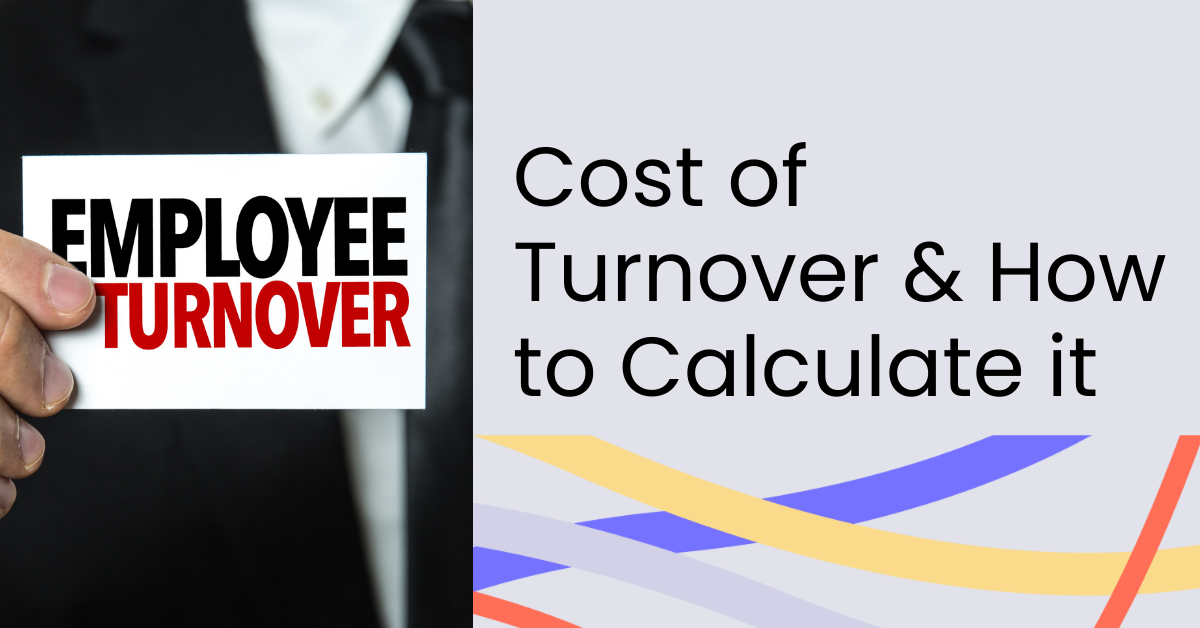What Is the Cost of Turnover?
The cost of turnover is the total financial loss your organization experiences when an employee leaves. This includes direct expenses — like severance or recruiting fees — and indirect costs like lost productivity and institutional knowledge.
While it’s often viewed as a people issue, turnover is a real financial risk — especially for PE-backed companies where margin expansion and operational efficiency are critical to value creation.
Why It Matters
Knowing the cost of turnover allows HR leaders to:
- Quantify the impact of attrition in board or executive meetings
- Prioritize which roles or teams require urgent retention strategies
- Make the case for investing in internal mobility, engagement, or better onboarding
- Model risk and upside in value creation or workforce planning efforts
Direct and Indirect Costs of Turnover
Turnover costs typically fall into two categories:
Direct costs include:
- Severance pay and PTO payouts
- Job board or recruiter fees
- Internal HR time spent offboarding and rehiring
- New hire onboarding and training expenses
- Temporary worker coverage
Indirect costs include:
- Lost productivity during the vacancy period
- Ramp-up time for the new hire
- Disruption to team morale or performance
- Burnout or turnover contagion in the remaining team
- Lost client relationships or knowledge
While direct costs are easier to measure, indirect costs often make up the majority of turnover impact — especially in high-skill or leadership roles.
A Practical Formula to Calculate Cost of Turnover
Here’s a simplified formula to estimate turnover cost for a given role:
Cost of Turnover = Separation Costs + Vacancy Costs + Recruiting Costs + Onboarding Costs + Productivity Loss
Let’s break that down:
- Separation Costs: Any severance, PTO payout, or HR time required to offboard
- Vacancy Costs: Time the role is unfilled, or cost of a temporary backfill
- Recruiting Costs: Ad spend, recruiter fees, interview time, background checks
- Onboarding Costs: Training materials, manager time, equipment or licenses
- Productivity Loss: Time it takes for a new hire to reach full productivity
The more strategic or complex the role, the more significant the productivity loss becomes.
Example: Mid-Level Professional Role
Imagine a mid-level employee with a $100K salary leaves. Here’s how you might estimate turnover cost:
- Separation Costs: $2,000
- Vacancy Costs: $8,000 (two months of lost productivity)
- Recruiting Costs: $10,000
- Onboarding Costs: $5,000
- Productivity Loss: $15,000 (based on 3-month ramp-up)
Estimated Total: $40,000
Even for a non-executive role, the cost of turnover is substantial — and that cost grows with the seniority and complexity of the position.
Turnover Costs Vary by Role Type
While every company is different, here’s how turnover costs typically scale relative to salary:
- Entry-level roles: 30% to 50% of annual salary
- Mid-level roles: 75% to 100%
- Technical or specialist roles: 125% to 200%
- Leadership roles: 150% to 250%
- Executive roles: 200% to 400%
This is why high-turnover in technical, leadership, or customer-facing roles tends to have the biggest business impact.
What Data You Need to Estimate Turnover Cost
To build a realistic cost of turnover model for your company, gather the following:
- Base salary and benefits for the role
- Time-to-fill metrics
- Ramp-up or time-to-productivity estimates
- Cost per hire (internal + external)
- Onboarding program costs
- Team productivity data, if available
If you don’t have exact figures, use conservative benchmarks or averages to create directional insights that still inform decision-making.
The Business Impact of Turnover
The financial impact of turnover goes beyond just hiring costs:
Financial effects:
- Increased costs without increased output
- Reduced profit margins
- Delayed or missed value creation targets
Operational effects:
- Slowed execution on key initiatives
- Increased errors or customer dissatisfaction
- Loss of critical knowledge
Cultural effects:
- Team burnout or disengagement
- Decline in employer brand or Glassdoor ratings
- Retention issues in adjacent teams
In PE-backed companies, high turnover can create friction in achieving EBITDA goals or scaling toward exit milestones.
How to Reduce Turnover Cost
Here are six strategies HR teams can use:
- Invest in Retention Programs
- Use engagement surveys, manager training, and career pathing to address root causes.
- Improve Internal Mobility
- Promote or laterally move existing talent to reduce external hiring needs.
- Speed Up Hiring and Onboarding
- Streamline recruitment and build consistent onboarding playbooks.
- Monitor Turnover Risk with People Analytics
- Track early warning signs like engagement drops, promotion bottlenecks, or comp gaps.
- Pay Competitively
- Benchmark total compensation regularly to reduce exit risk.
- Hold Managers Accountable
- Train leaders on retention strategies and link their outcomes to engagement or turnover KPIs.
Common Questions HR Teams Ask
“Can we just use a fixed estimate?”
Many organizations use a standard estimate (like $30K per departure), but this can lead to misleading decisions. Estimating per role type is more effective.
“Is voluntary or involuntary turnover more expensive?”
Voluntary turnover is usually more expensive — especially when top performers leave unexpectedly.
“Should we report turnover cost to our board or PE firm?”
Yes. Especially in PE environments, this is a valuable operational KPI that shows financial risk and areas for improvement.
Final Thoughts
Turnover is inevitable. But unplanned, unmanaged turnover is expensive — and often avoidable. By calculating the true cost of turnover, HR leaders can frame attrition as a business problem, not just an HR one.
Whether you’re building a board deck, defending a retention budget, or modeling workforce planning scenarios, understanding turnover cost is one of the clearest ways to show HR’s strategic impact on the business.

